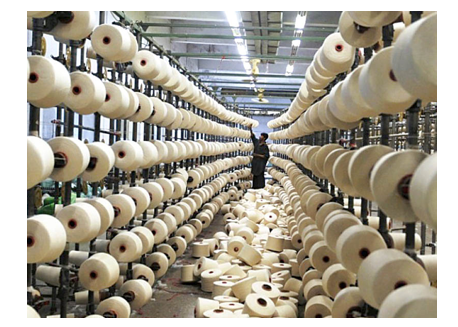INP-WealthPk
Amir Khan

Pakistan's textile and garment industry has shown a vigorous export performance despite significant challenges such as fluctuating exchange rates, rising energy costs, and global market pressures. Although the dollar value of exports remained stable compared to the previous year, the volume of exports grew significantly across most major value-added segments, with many experiencing a double-digit growth. Talking to WealthPK, Joint Secretary of Professional and Skill Development at the Ministry of Industries and Production Ms. Saira Imdad highlighted that FY24 was characterized by historically high bank financing rates. Only the most resilient companies managed to thrive, with larger firms dominating the export sector. “The top 30 textile firms alone accounted for one-third of the industry's total exports, showcasing their resilience despite falling export prices and challenging economic conditions,” she said.
Despite 15% depreciation in the exchange rate, the unit prices for various value-added products were lower in Pakistani Rupee. For instance, the average unit price in dollar for knitwear, readymade garments, and cotton yarn decreased by 43%, 31%, and 24%, respectively, compared to FY22. Talking to WealthPK, Muhammad Asad Aslam, Additional Secretary of Industries and Production, pointed out that substantial decline in the raw material prices, which had dropped by half from their peak two years ago, had reduced the global competitiveness of Pakistan’s textile industry. To tackle this issue, the industry has two options: either roll back the recent measures such as concessional finance and energy tariff adjustments to offer relief or let only the most efficient companies survive in the highly competitive market, he added.
Asad explained that potential shift from the traditional textile sectors to technology-driven investments could indeed pave the way for a more sustainable and competitive industry. The focus on larger, well-capitalized firms and the necessity for smaller players to diversify highlights the need for strategic adjustments in response to an evolving global market. Currently, Pakistan’s textile export potential is capped at around $16 billion, mainly driven by a small number of large, well-capitalized firms. For smaller and midsized players, diversifying away from the textile industry may be the only viable option given the country's unreliable energy supply and lack of investment. The textile industry is facing both potential collapse and rebirth. The shift of investment from traditional sectors to technology may finally be feasible, enabling competitive firms to thrive without relying on subsidies and concessions.
Credit: INP-WealthPk













